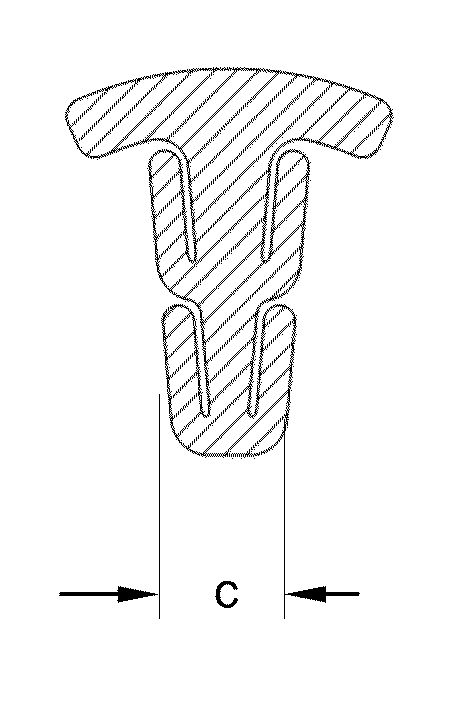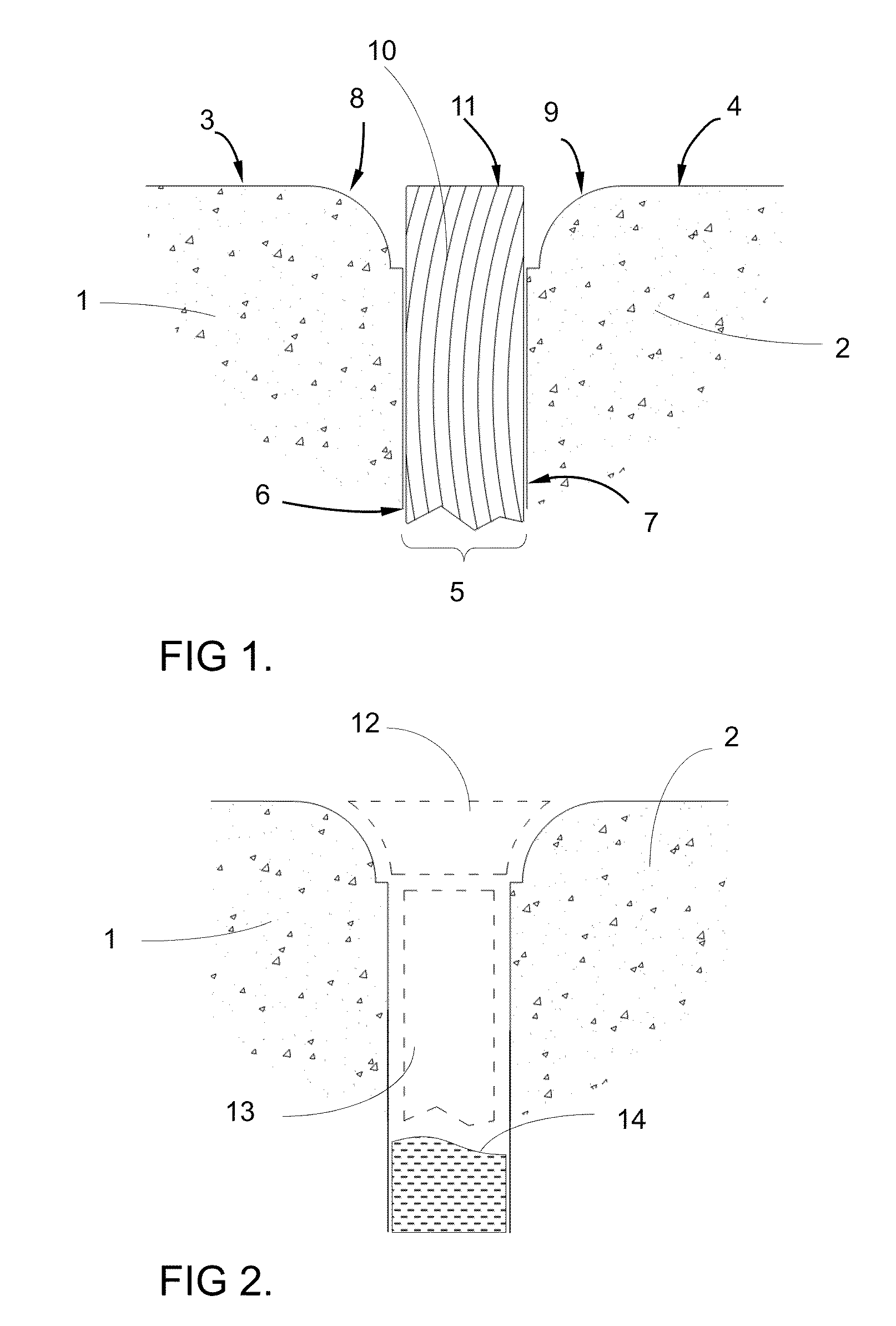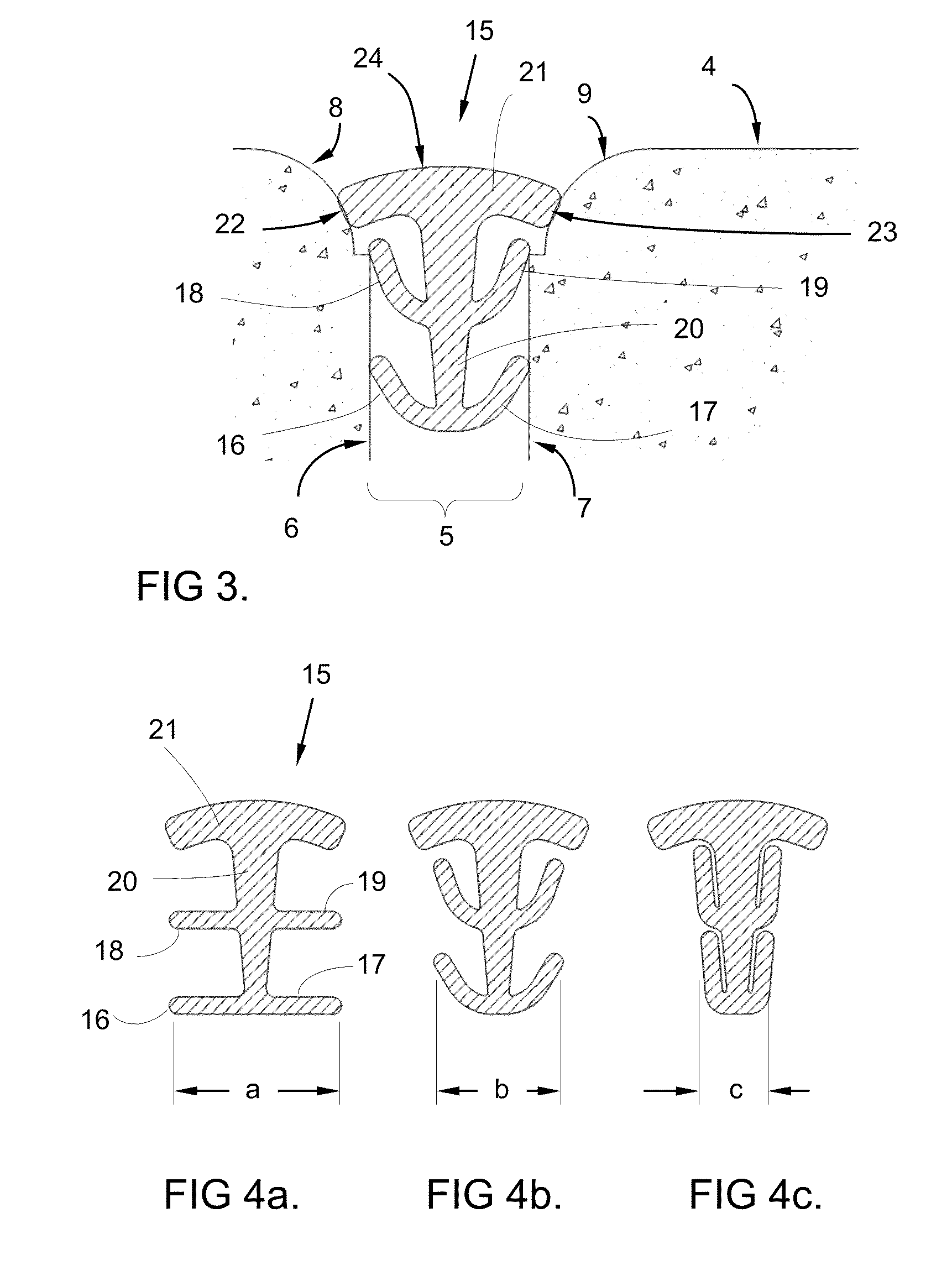Compliant trim for concrete slabs
a technology of concrete and trim, applied in the field of compliant trim, can solve problems such as inability, and achieve the effects of reducing weeds and plant growth, limiting the quantity of particulates, and minimizing the depth and volume of foreign materials
- Summary
- Abstract
- Description
- Claims
- Application Information
AI Technical Summary
Benefits of technology
Problems solved by technology
Method used
Image
Examples
Embodiment Construction
[0029]The claimed invention is intended to replace wooden formwork which was placed between adjacent slabs at the time said slabs were poured. A cross-section of said formwork is shown in FIG. 1. Adjacent slabs 1 and 2 are characterized by an exposed surface 3 and 4, a gap 5 with substantially parallel surfaces 6 and 7, and an edge radius 8 and 9. Said formwork 10 has a surface 11 which is substantially coplanar to said exposed slab surface 3 and 4. In fact, formwork surface 11 is generally used to establish exposed surface 3 and 4 during the installation of said slabs 1 and 2.
[0030]Once said wooden formwork 10 has been removed, two distinct zones can be defined. Referring to FIG. 2, the first of said zones lies at the surface, between the edge radius 8 and 9 of said slabs 1 and 2. This radius zone 12 is further defined by an upper boundary substantially co-planar to said exposed surface 3 and 4, and a lower boundary at the termination of edge radius 8 and 9. The second zone lies be...
PUM
 Login to View More
Login to View More Abstract
Description
Claims
Application Information
 Login to View More
Login to View More - R&D
- Intellectual Property
- Life Sciences
- Materials
- Tech Scout
- Unparalleled Data Quality
- Higher Quality Content
- 60% Fewer Hallucinations
Browse by: Latest US Patents, China's latest patents, Technical Efficacy Thesaurus, Application Domain, Technology Topic, Popular Technical Reports.
© 2025 PatSnap. All rights reserved.Legal|Privacy policy|Modern Slavery Act Transparency Statement|Sitemap|About US| Contact US: help@patsnap.com



